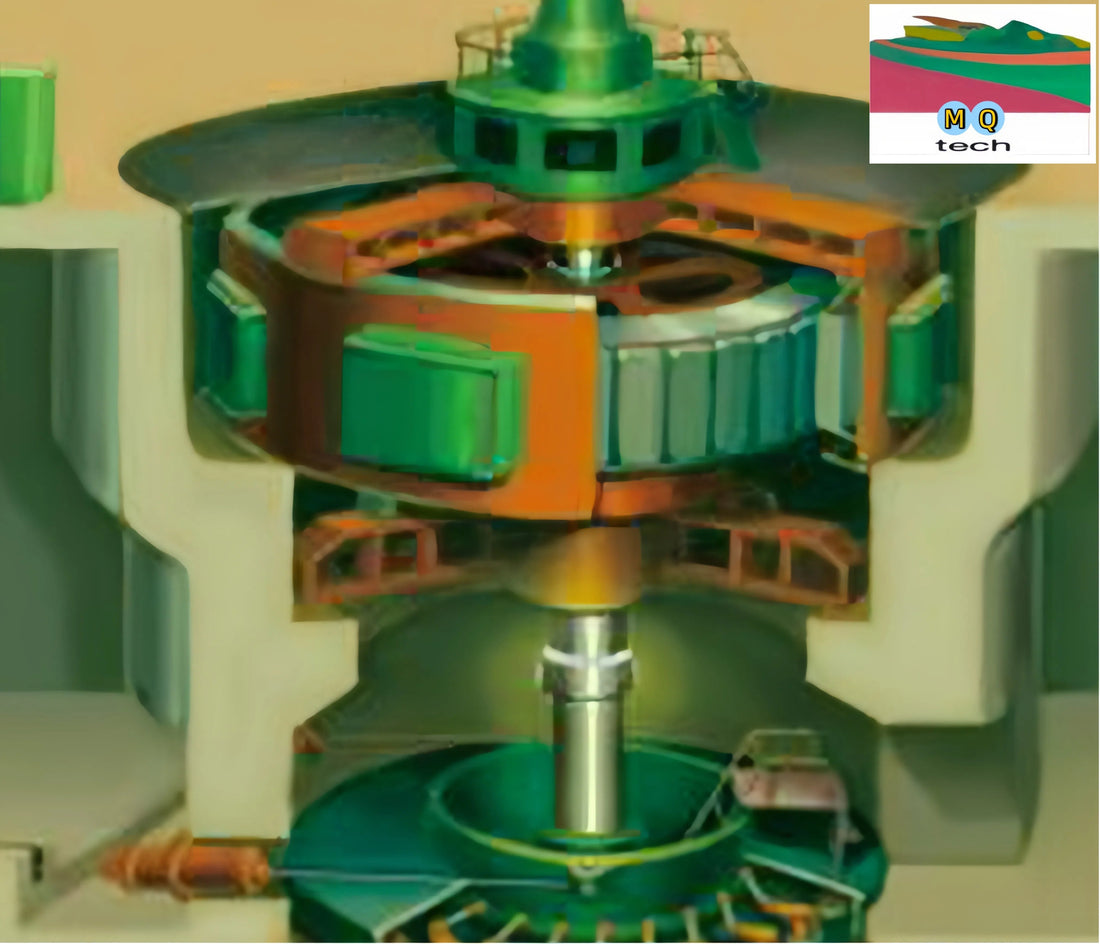1、 Applicable conditions for mixed flow turbine
The mixed flow turbine is the most widely used type of turbine in the world today, named after the fact that the water flow entering the turbine is "mixed" (both radial inflow and axial outflow).
Core feature: "King of the Mean" - achieves the best balance in terms of applicable head, flow rate, and single machine capacity.
Clear column:
Applicable head range: Medium head
Typical range: 20 meters to 700 meters.
Best range: 40 meters to 400 meters. Within this range, it has the highest efficiency and the most mature technology.
Applicable traffic: Medium traffic
Can adapt to certain flow changes, but not as suitable for large flow as axial flow turbines.
Structure and principle:
Water flow path: The water flows horizontally (radially) into the volute, changes direction through the guide vanes, vertically impacts the impeller blades, and then turns to flow out axially.
Characteristics of the impeller: The blades are fixed in a spiral shape, like a complex conch, which can efficiently transfer the potential and kinetic energy of the water flow to the impeller.
Advantages:
High efficiency: It can maintain high efficiency within a wide range of water head and flow rate, and the highest efficiency point is very high.
High reliability: sturdy structure, stable operation, and relatively low maintenance costs.
Mature technology: With extensive experience in design, manufacturing, and operation, it is the default choice for large power plants.
Large single machine capacity: It is very suitable for manufacturing ultra high power units and is the main model of giant hydropower stations such as the Three Gorges.
Disadvantages:
When the water head is too low or the flow rate changes too much, the efficiency will significantly decrease.
More unsuitable for reservoirs with large water level fluctuations than axial flow turbines.
In summary, when you encounter a project with medium to high head, moderate flow, and the need to build a large power station, mixed flow turbines are almost always the preferred solution.
2、 The difference between reservoir type and runoff type power stations
This is a fundamental classification of hydropower stations based on their reservoir regulation capacity, which directly determines the operation mode of the power station and its role in the power grid.
Core difference: Whether there is a "reservoir" and regulating ability.
For your convenience, here is a comparison table between the two:
Comparative Dimension Reservoir type Hydropower Station Runoff type Hydropower Station
The core features include large reservoirs that can store water but have no reservoirs or small reservoirs that cannot store water
Metaphorically speaking of a "rechargeable battery" - capable of energy storage and peak shaving, a "DC water pipe" - capable of producing as much water as possible and generating as much electricity as possible
Strong regulatory ability. Water from the wet season (or nighttime) can be stored and used during the dry season (or peak electricity consumption). None or extremely weak. Completely dependent on the natural flow of the river at that time.
High value power sources for the power grid. Can bear peak load, participate in peak shaving and frequency regulation, and ensure the stability of the power grid. Base load power supply. It can only provide basic electricity continuously and cannot respond to the fluctuating demand of the power grid.
Stable and controllable output stability. The power generation plan can be formulated according to the demand of the power grid and is not affected by short-term water inflow. Fluctuations and uncontrollability. The power generation output varies dramatically with seasons and weather (dry/rainy season).
Comprehensive utilization is powerful. It has comprehensive benefits such as flood control, water supply, irrigation, shipping, and tourism. Very limited. The main function is to generate electricity.
The environmental impact is significant. Submerged land is abundant, the scale of resettlement is large, and the river ecosystem is altered. Smaller. The natural flow state of the river changes little, and the ecological impact is relatively light.
High construction cost and long cycle. The construction of dams and reservoirs is massive. Low cost, short cycle. Simple structure, faster construction.
The suitable terrain is mostly in the canyon areas of the upper and middle reaches of rivers, making it easy to build high dams and large reservoirs. Mostly built in the middle and lower reaches of rivers with gentle slopes and concentrated drops.
Decision inspiration:
Choosing a reservoir type is investing in a stable, reliable, and multifunctional strategic infrastructure.
Choosing a runoff type is investing in a clean energy power point that requires small investment, quick returns, and relies on natural conditions.
I hope this clear column can help you better understand these two key concepts!
---------------------------------------

